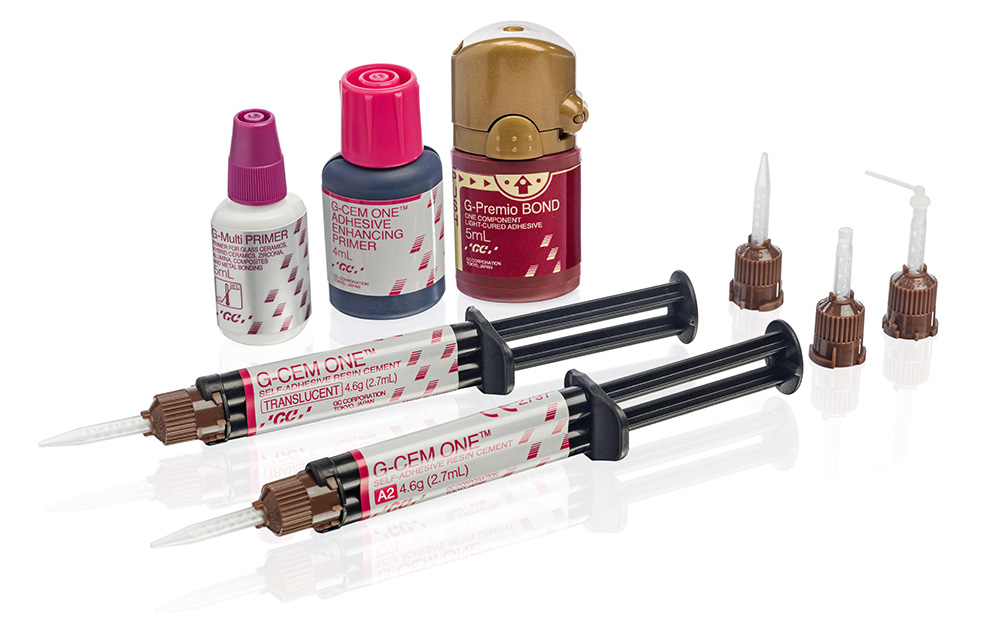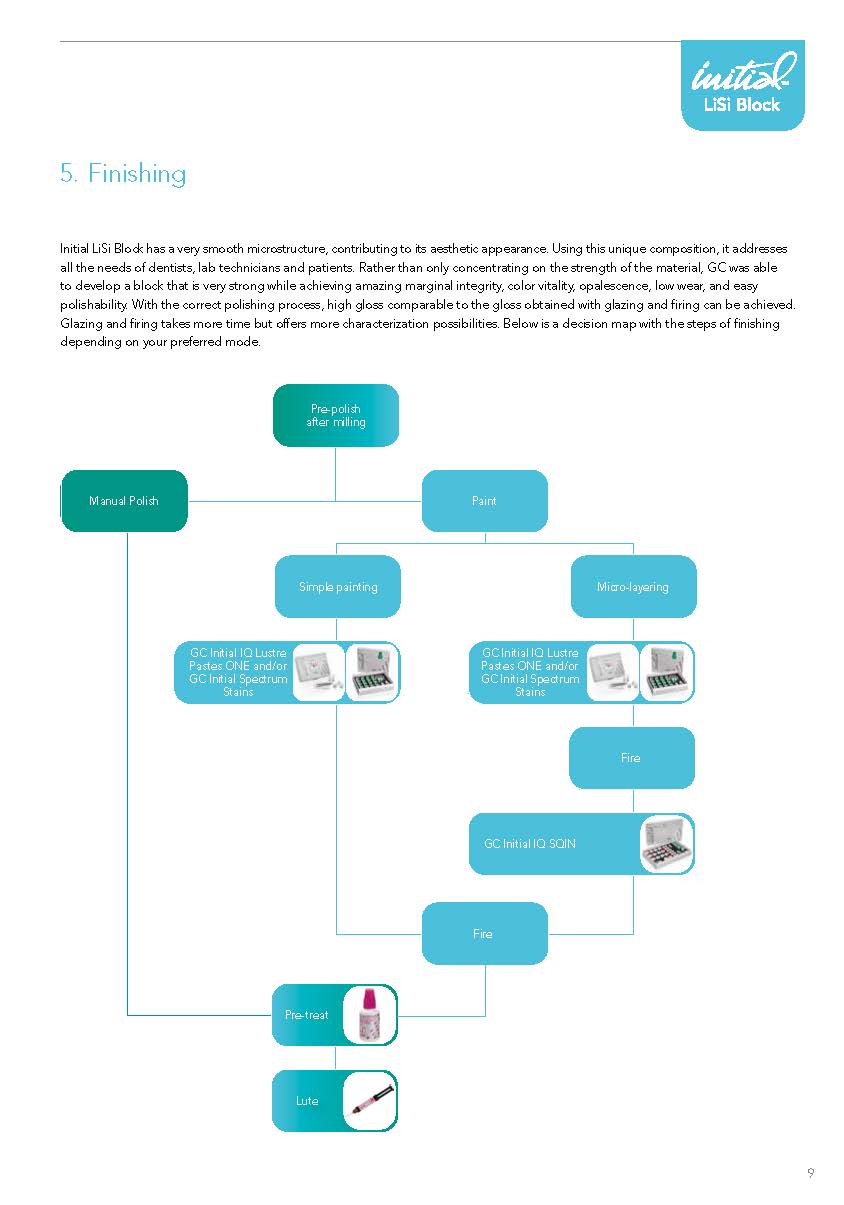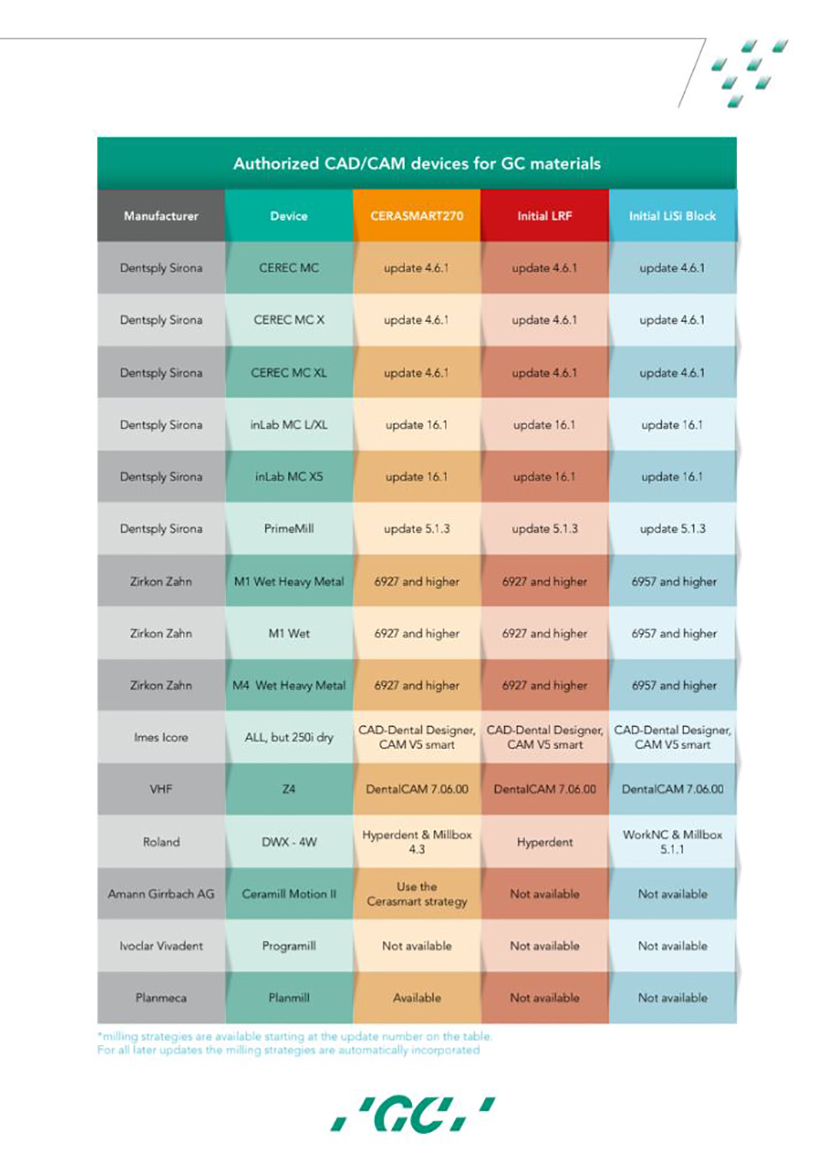


Natural beauty restored in one appointment
Initial LiSi Block is a fully crystallized lithium disilicate block that delivers optimal physical properties without firing. This unique block features GC’s proprietary HDM (High Density Micronization) technology for CAD/ CAM dentistry to deliver high wear resistance, smooth margins and aesthetic final results. This makes it an ideal, time saving solution for single visit chairside treatments.
Save time
no firing required
Fully crystallized
lithium disilicate
Durable aesthetics
& accurate margins
Natural opalescence
HDM technology for CAD/CAM dentistry
GC has further developed HDM technology for CAD/CAM dentistry by optimizing the crystal size and glass matrix stiffness. Thanks to this new technology, good machinability, marginal integrity, polishability, and wear resistance are achieved at the same time. The result is a strong and easy-to-mill block that offers the same strength with or without firing.
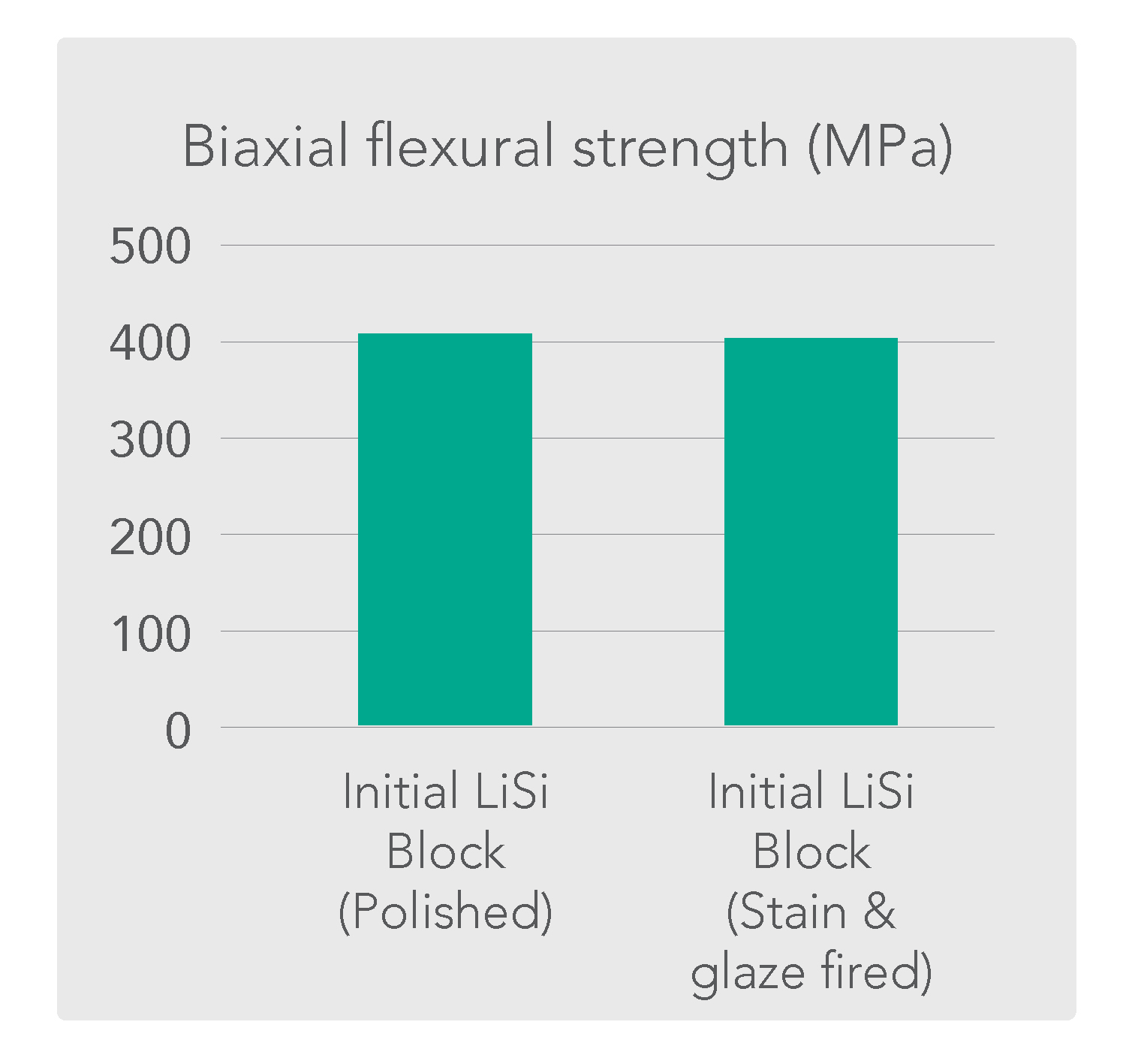
Source: GC R&D, Japan, Data on file

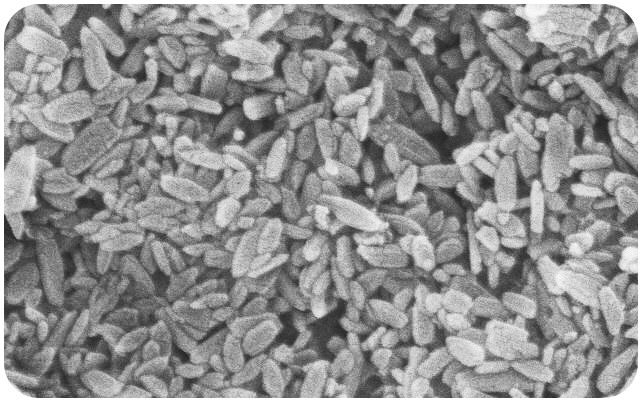
Source: GC R&D, Japan, Data on file
Conventional lithium disilicate technology
(on the left side) (IPS e.max CAD)
compared to HDM technology for CAD/CAM
(on the right side) (Initial LiSi Block)
Improved glass matrix stiffness
for high mechanical strength
Smaller crystals
for easy milling & high wear resistance
Just Mill, Polish and Place
Initial LiSi Block can dramatically reduce process time: no need to fire, glaze, characterize and cool.
This saves up to 40% in the time* required to create your restorations, also reducing the chair time for you and your patient.
You just need to mill, polish and place!
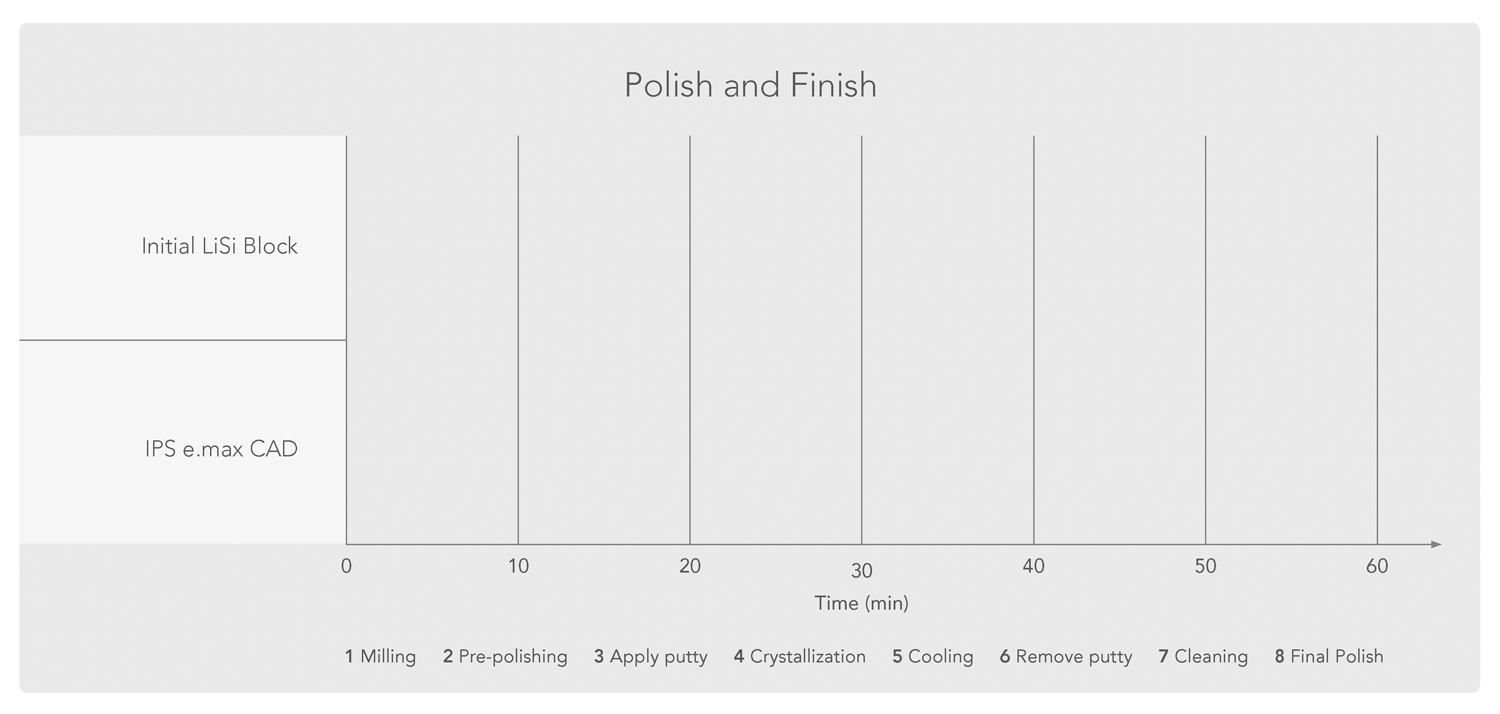
Source: GC R&D, Japan, Data on file
*Under testing conditions based on IFU.
More accurate margins
Being fully crystallized before milling, Initial LiSi Block can be milled with smooth and accurate margins directly.
Alternatively, it can be fired after staining and maintain great marginal accuracy.
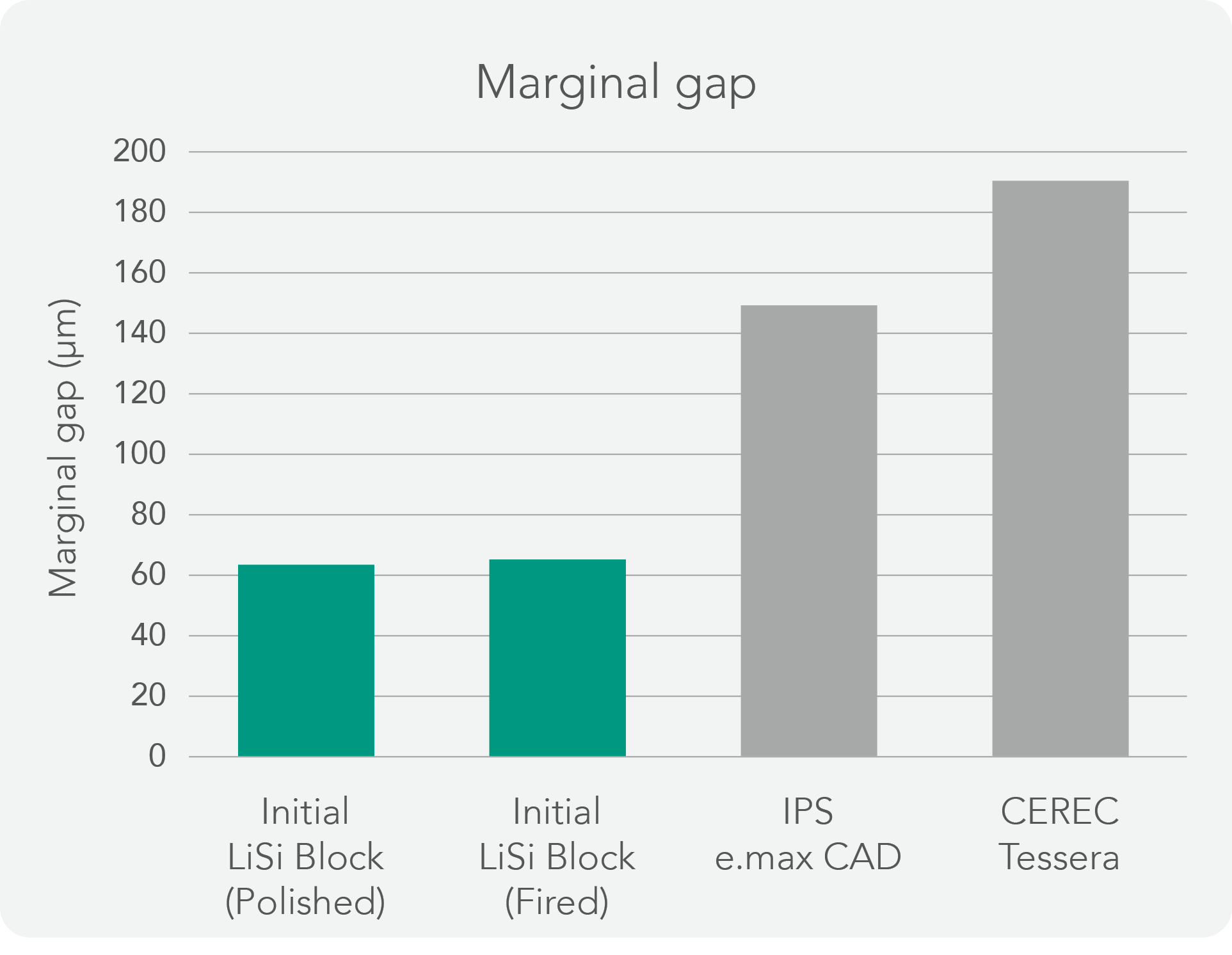
Source: GC R&D, Japan, Data on file

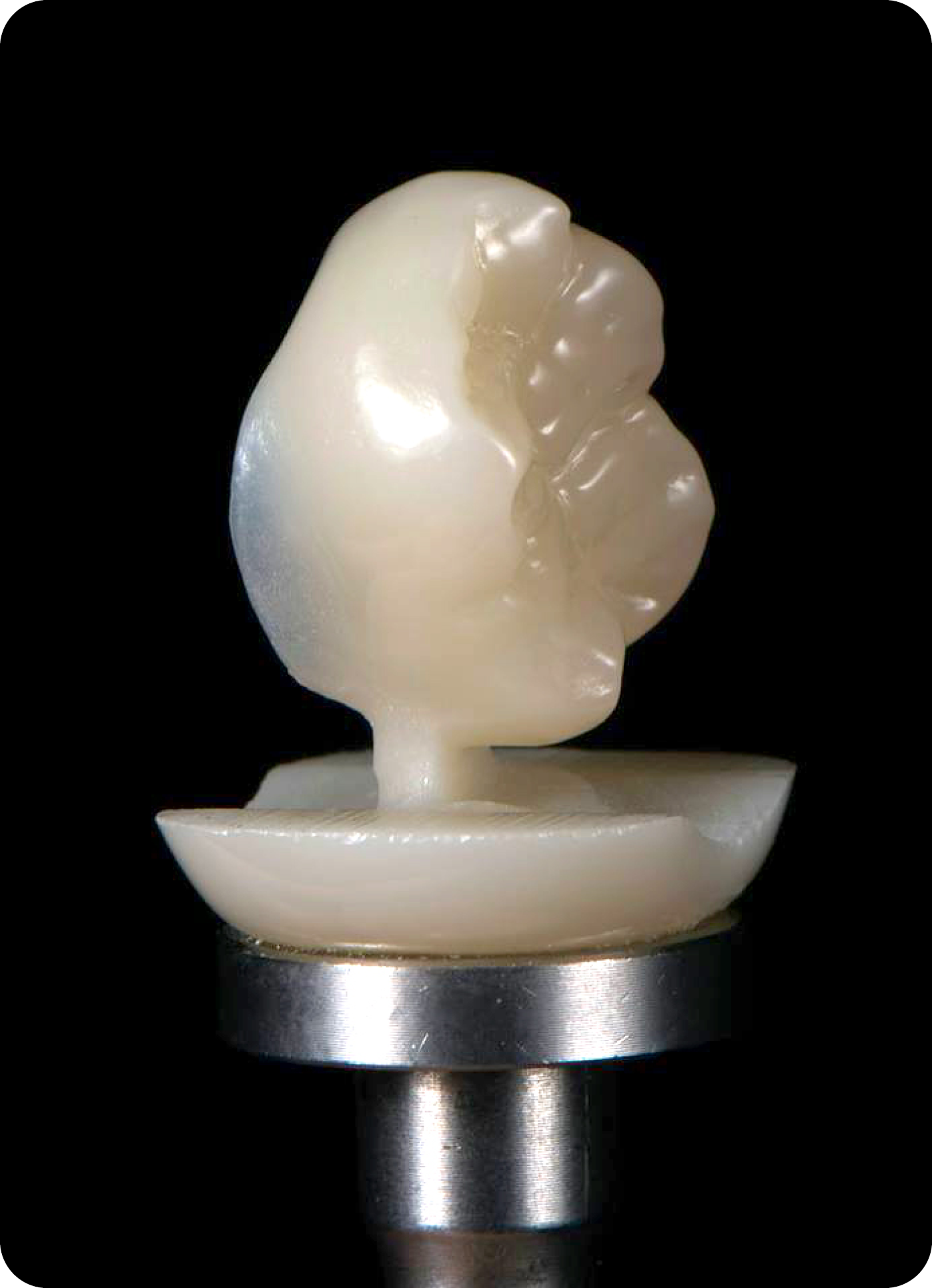
Courtesy of MDT. D. Ibraimi, Switzerland
Workflow
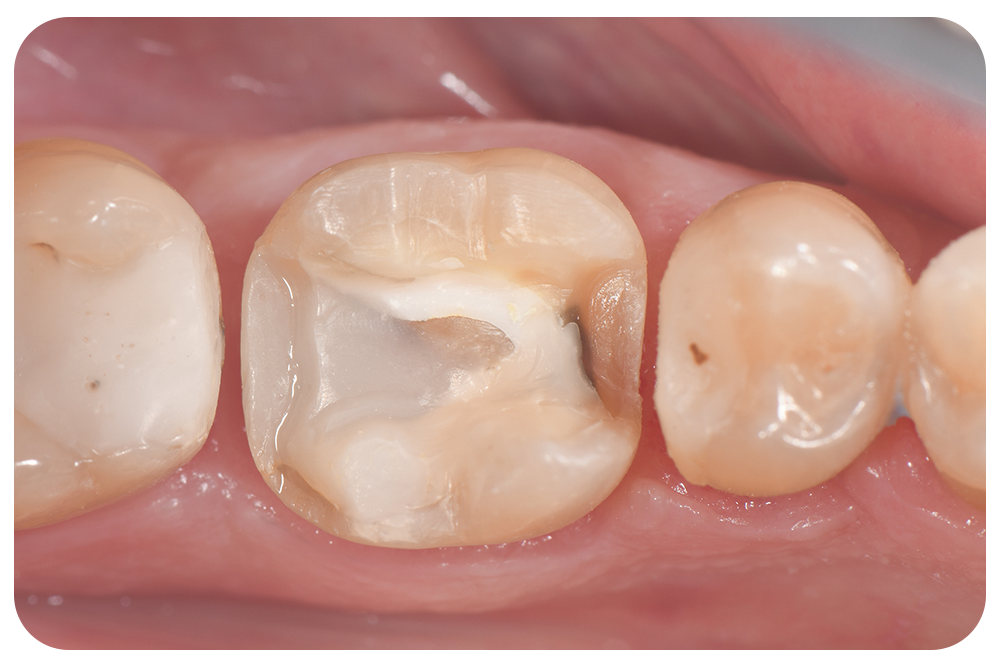
1. Prepare

2. Scan
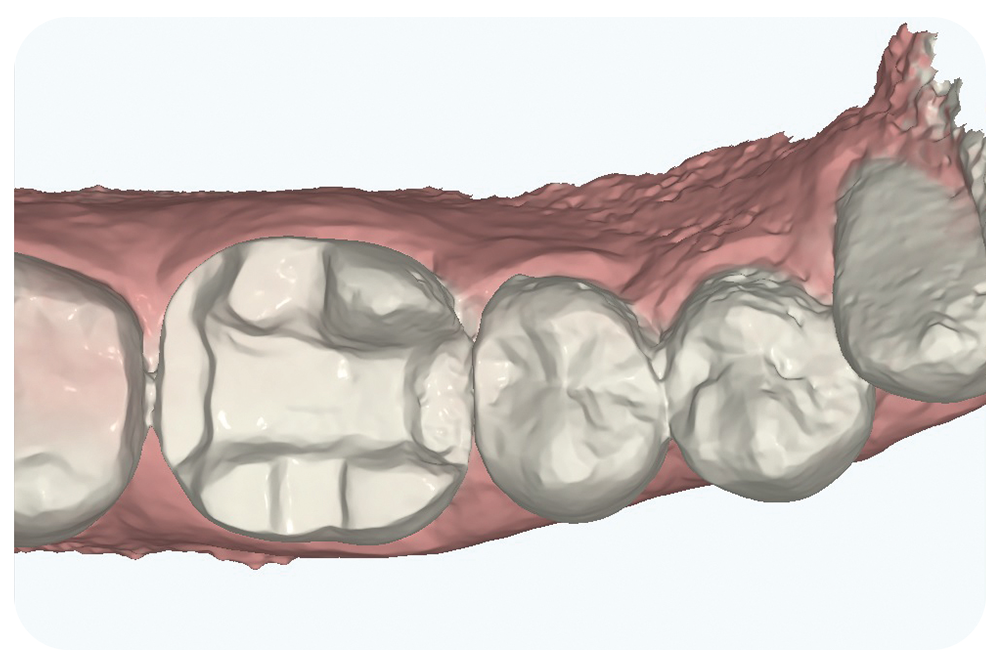
3. Design
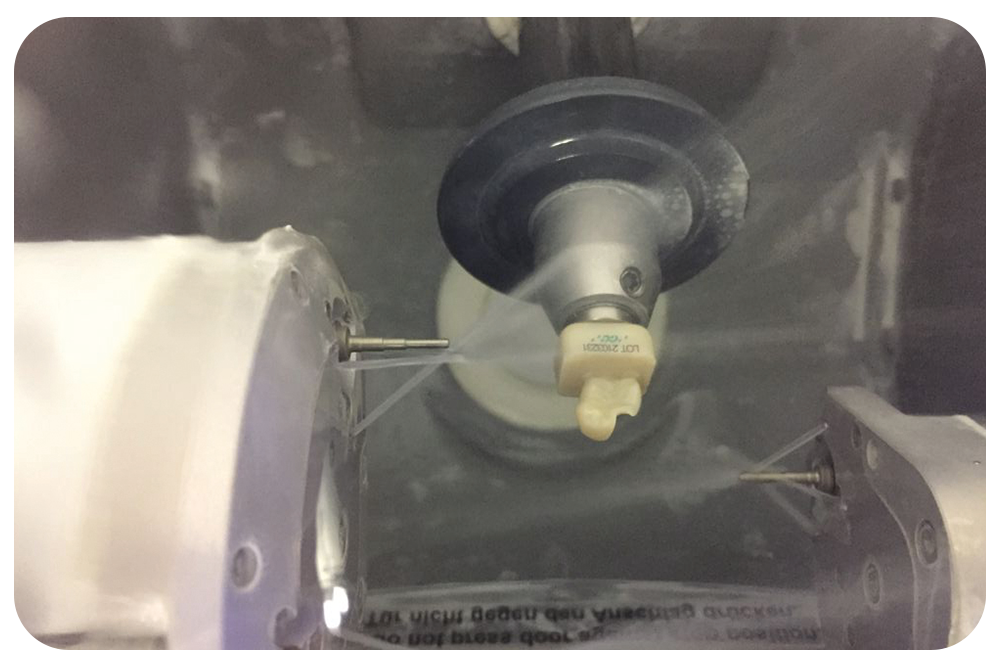
4. Mill
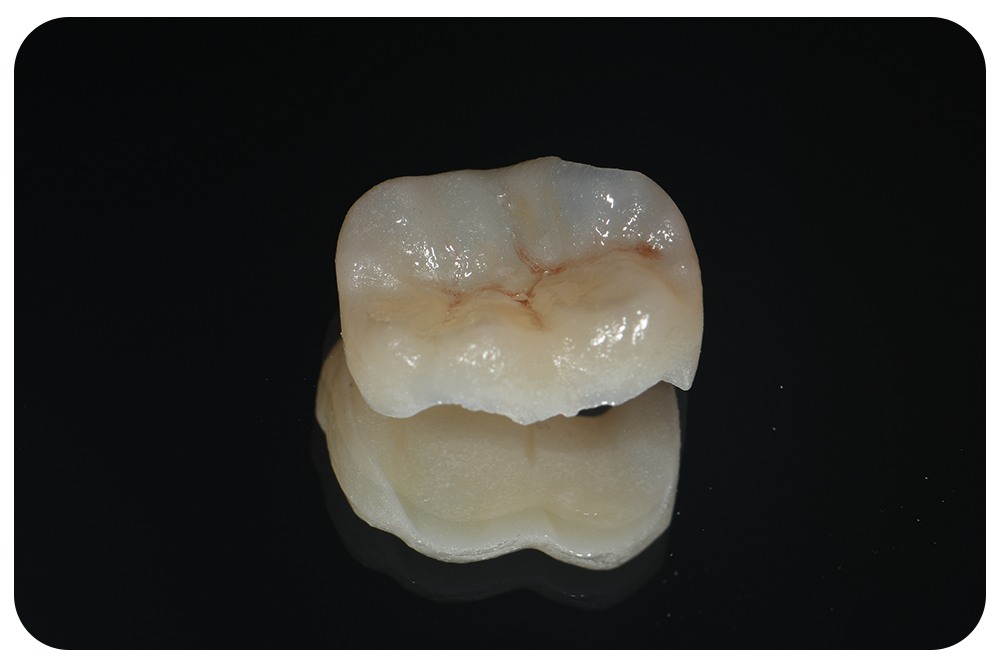
5. Polish or characterize
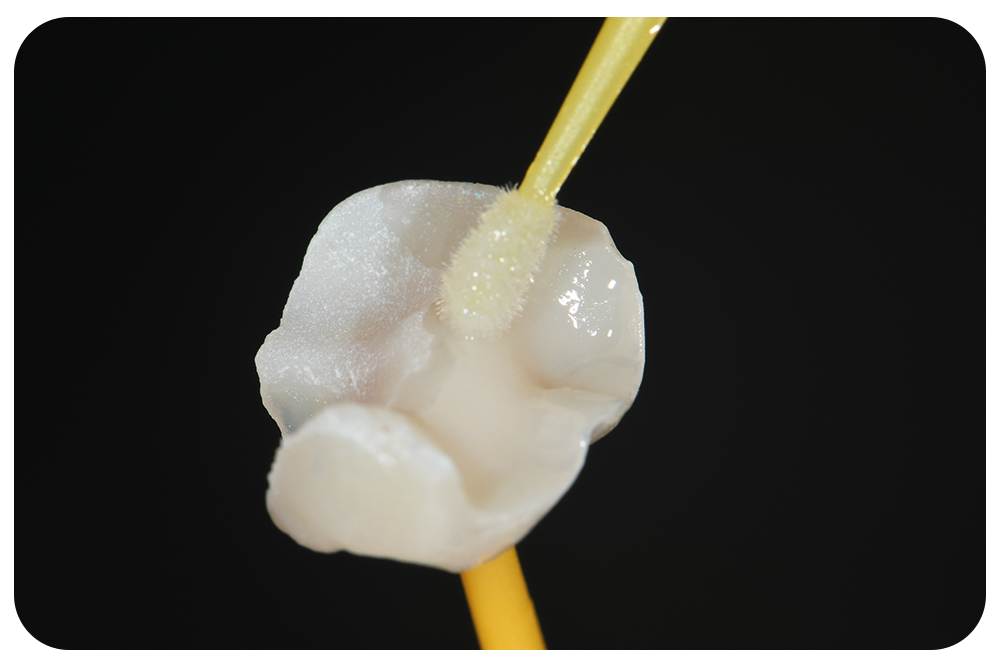
6. Condition
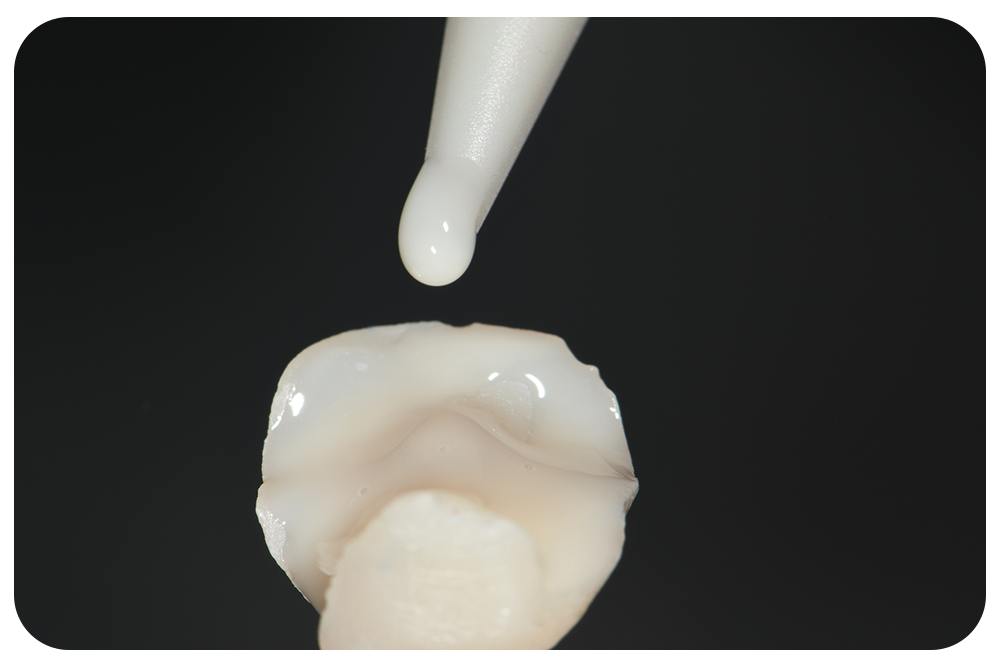
7. Cement

8. Final result
Courtesy of Prof. Matteo Basso, Italy
Choice of translucency in accordance with the indication
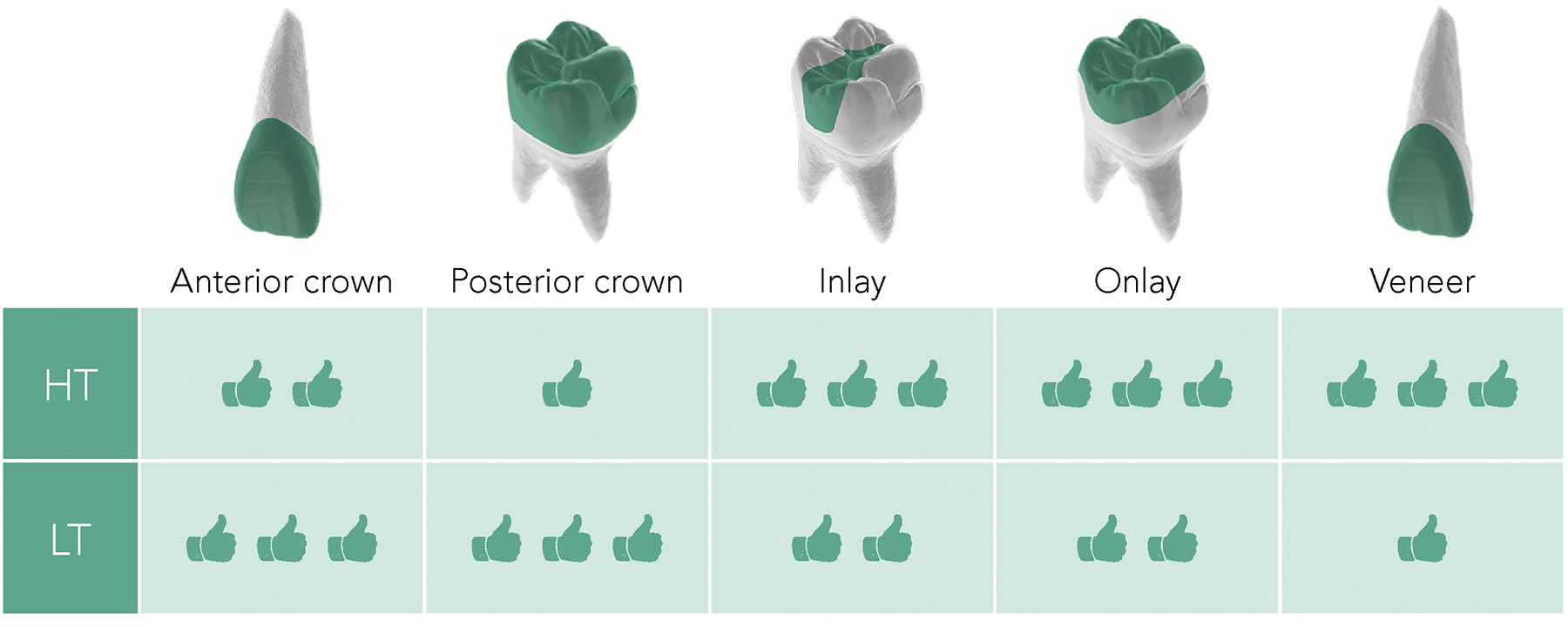
Preparation guidelines
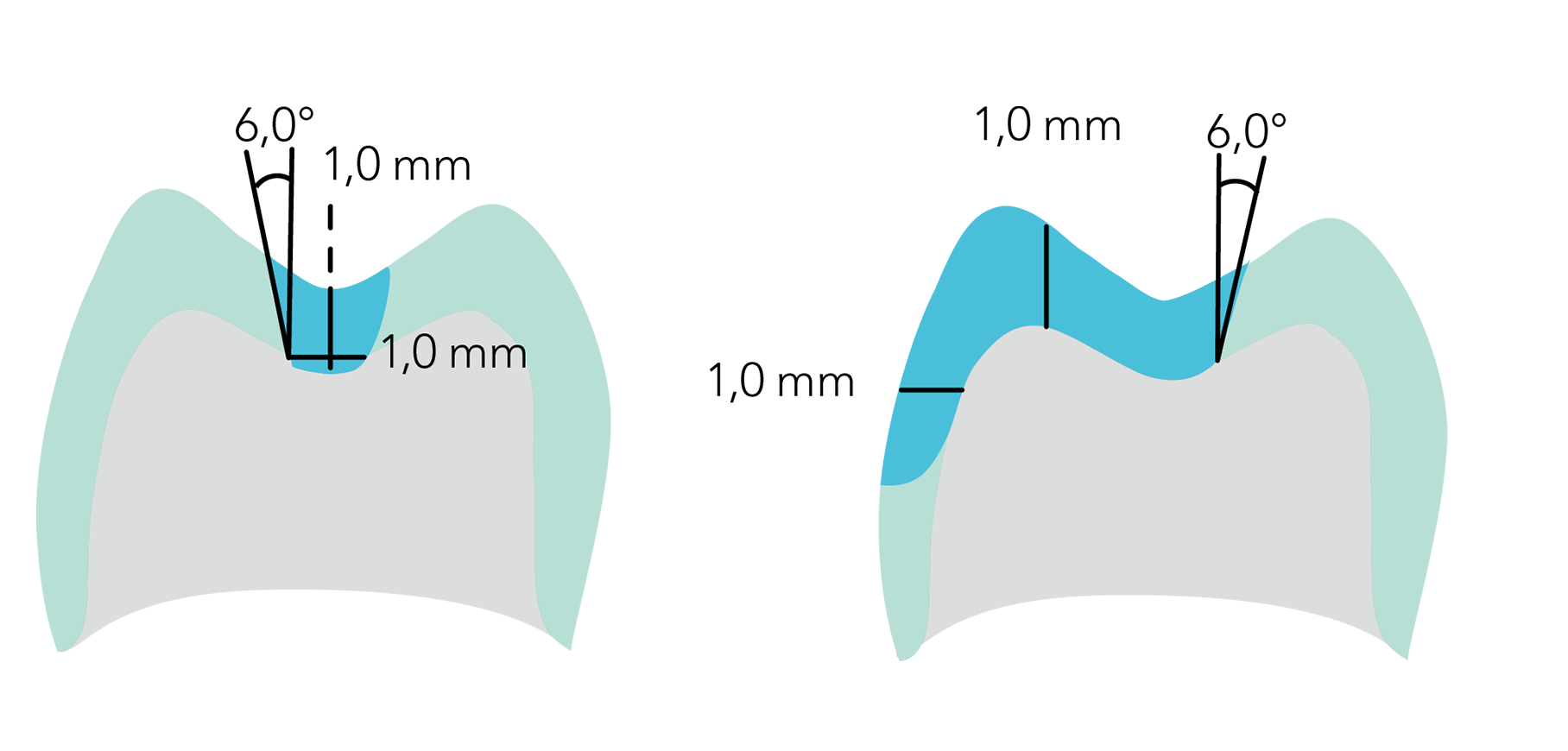
Inlays / Onlays
- Cavity wall angle: 6° with long axis
- Shoulder preparation
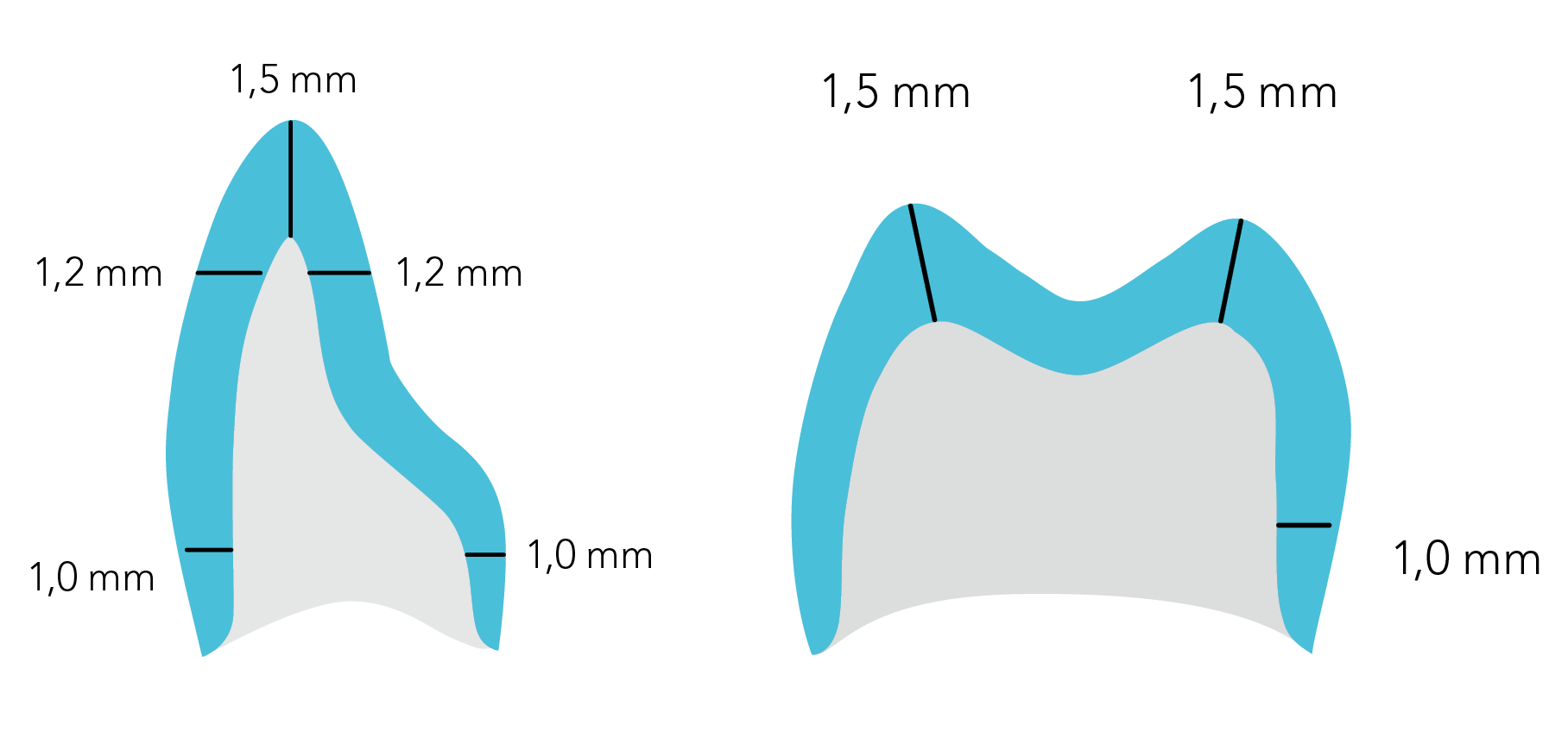
Full crowns
- Wall angle: 6~10°taper
- Deep chamfer or round chamfer preparation
Choose your preferred finishing procedure
Superior gloss can be obtained in few minutes by polishing only, and the restoration is then ready for luting. For sophisticated aesthetic cases, remarkable results can be achieved with GC Initial Lustre Pastes ONE and Initial Spectrum Stains.
Polish with standard burs
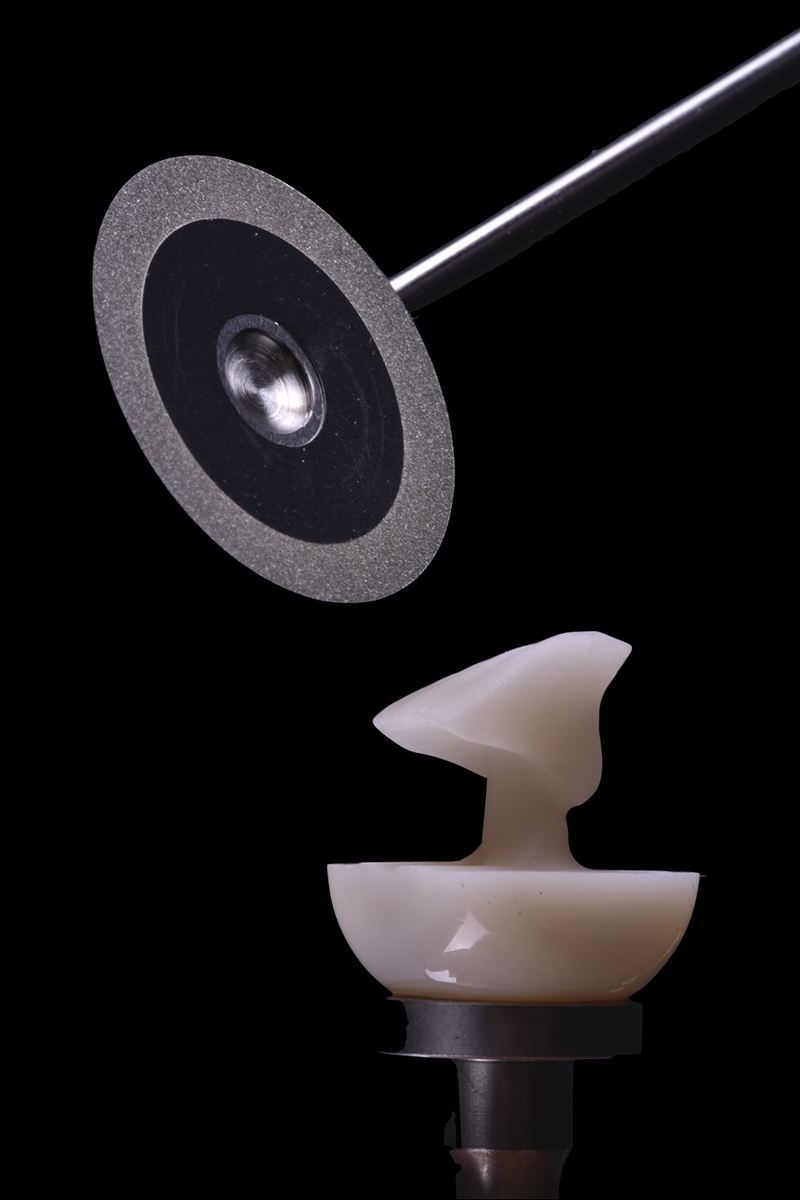

Diamond bur
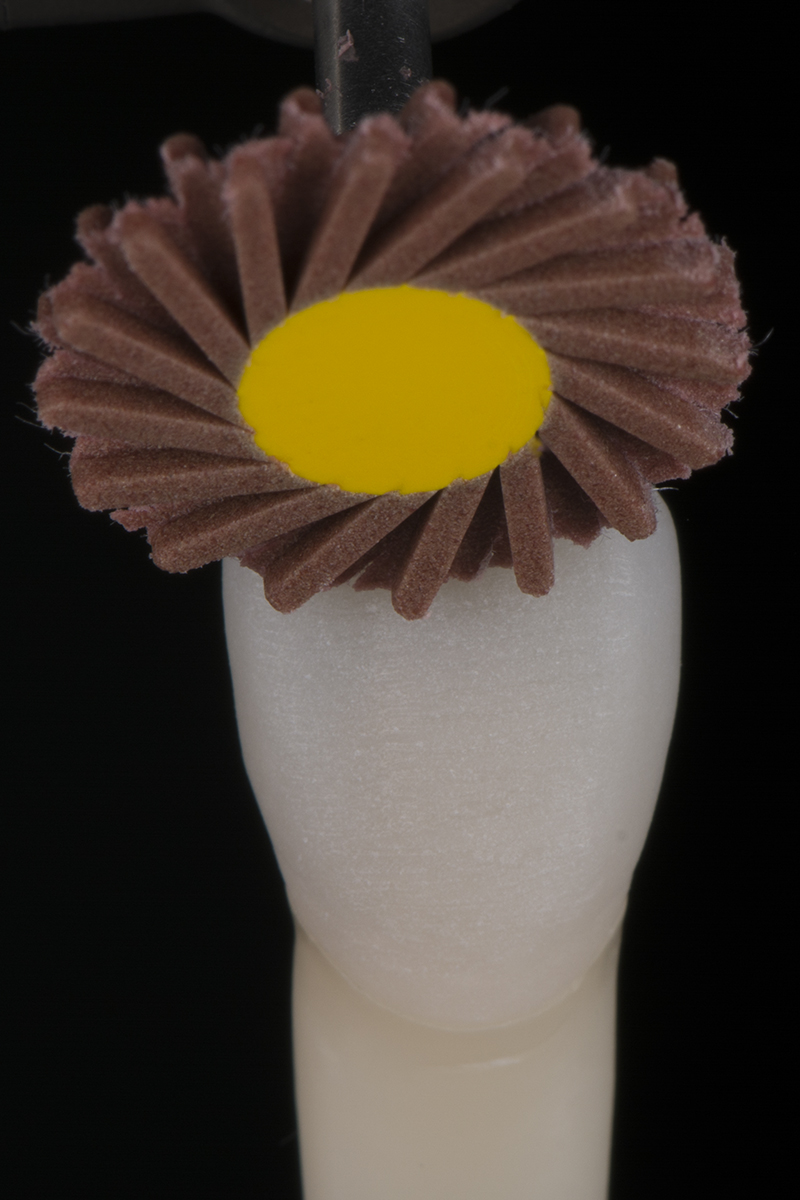
Coarse

Medium
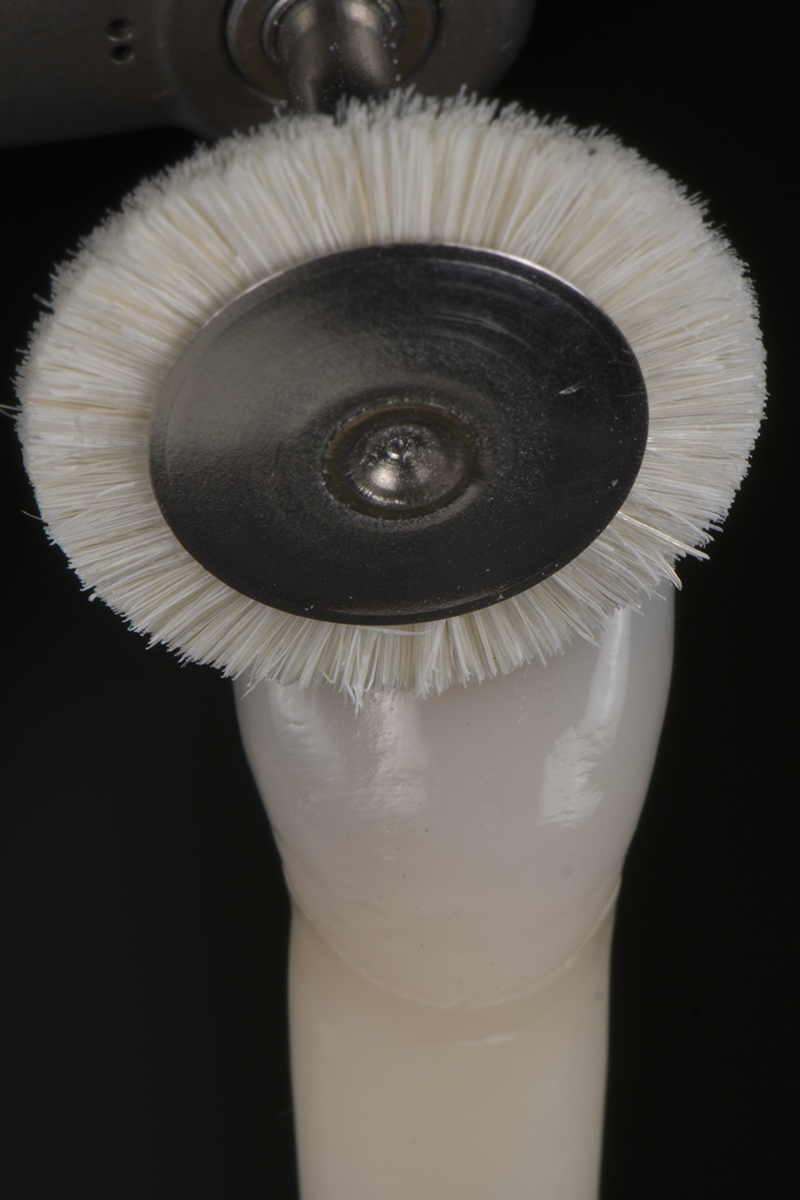
Goat’s wheel
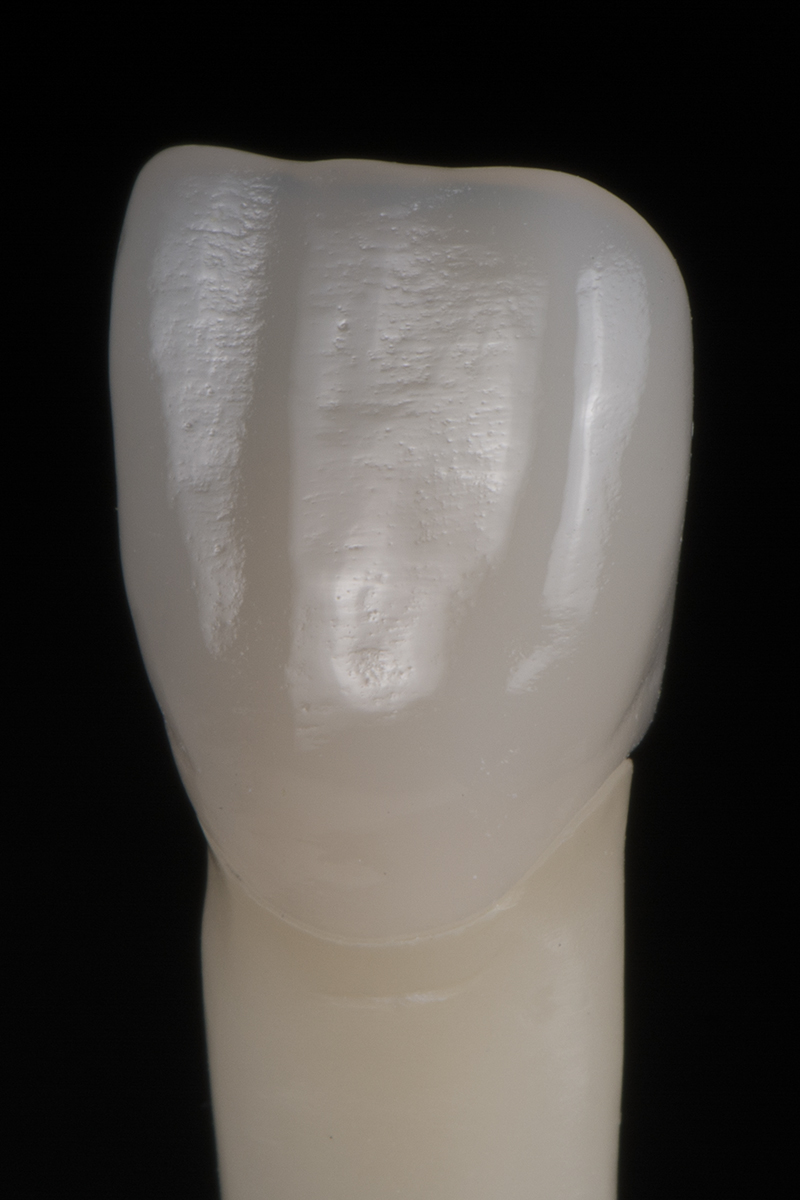
Final result
Courtesy of MDT L. Cavallo, Italy
Characterize with
Initial IQ Lustre Paste ONE

NFL for gloss & fluorescence

A Plus for Chroma
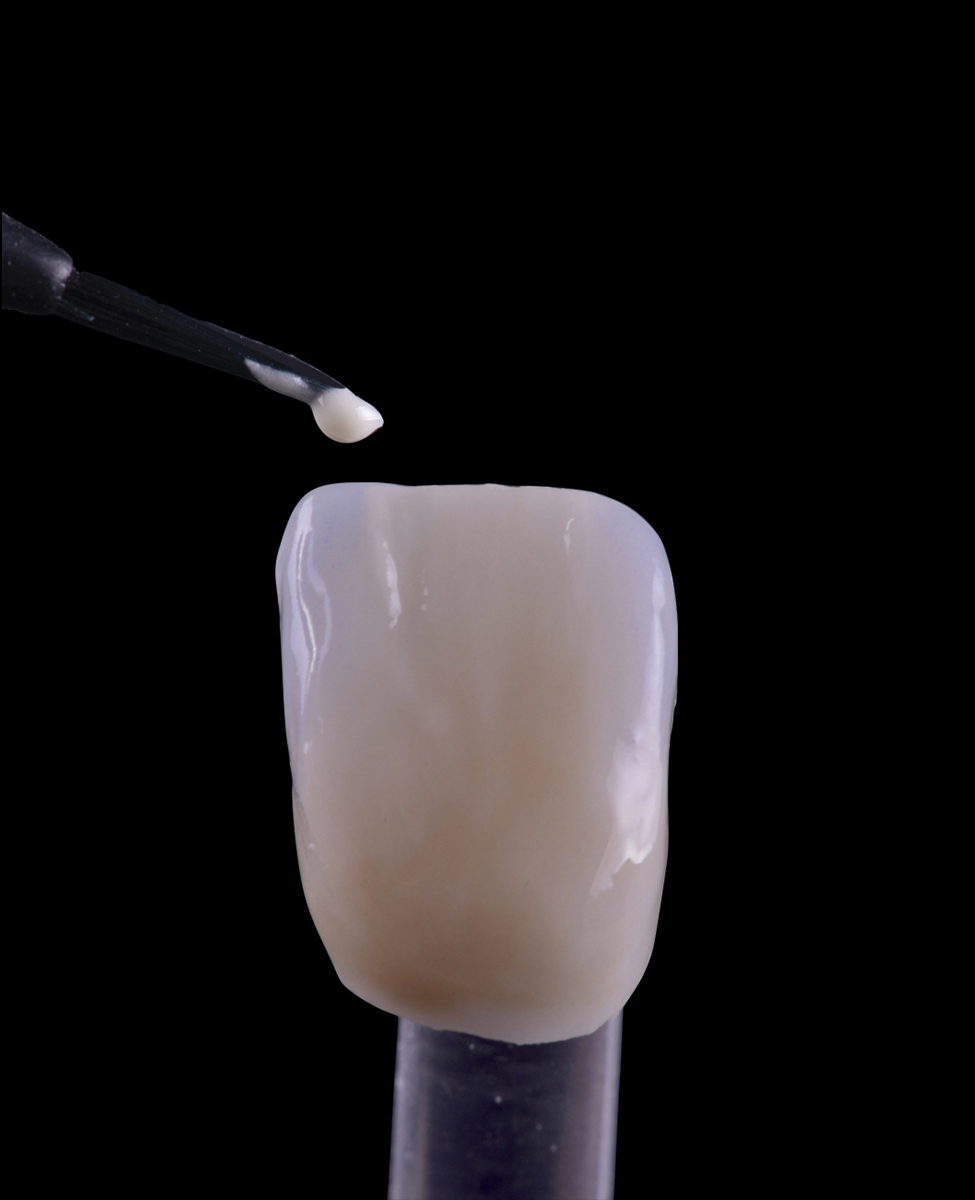
White for spots
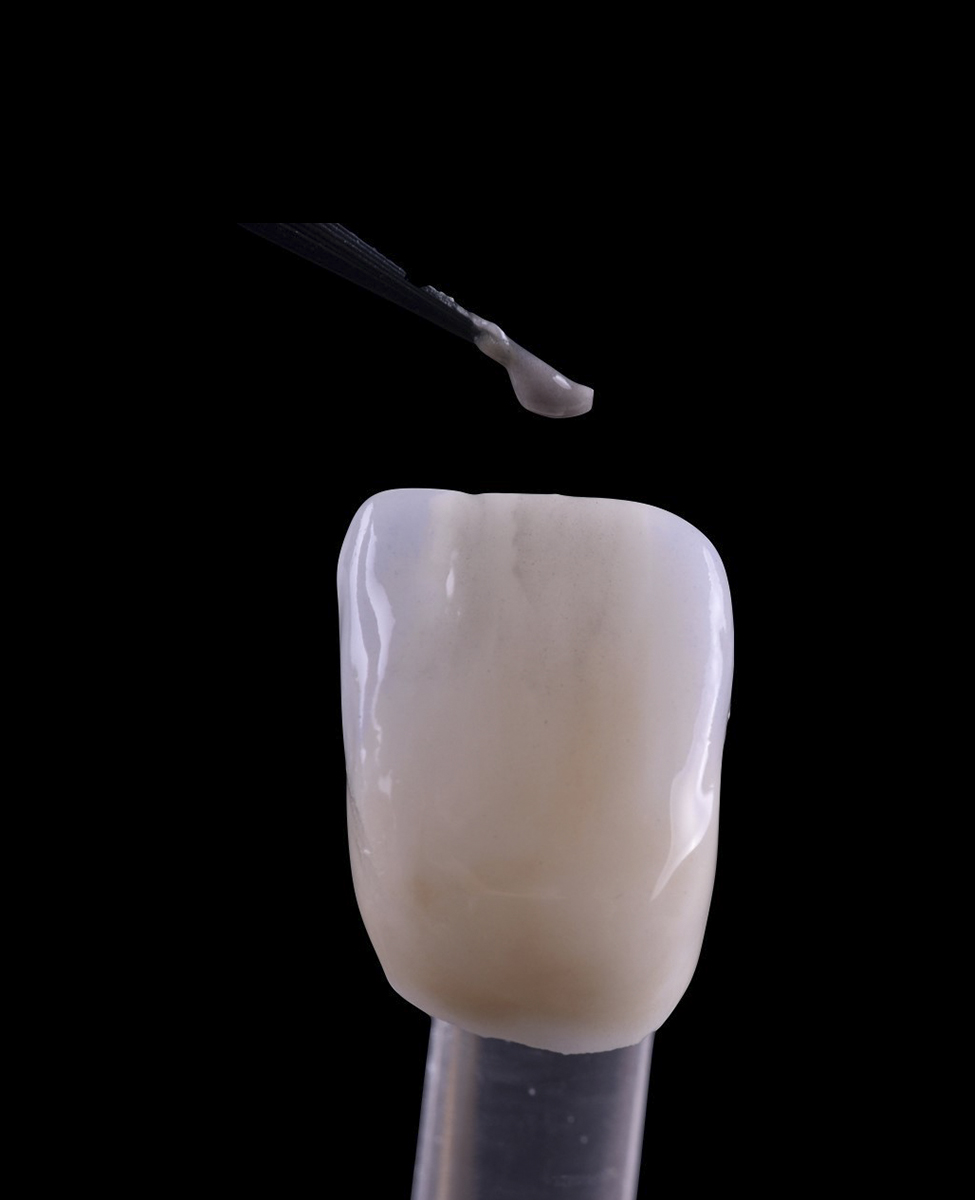
Gray for translucency
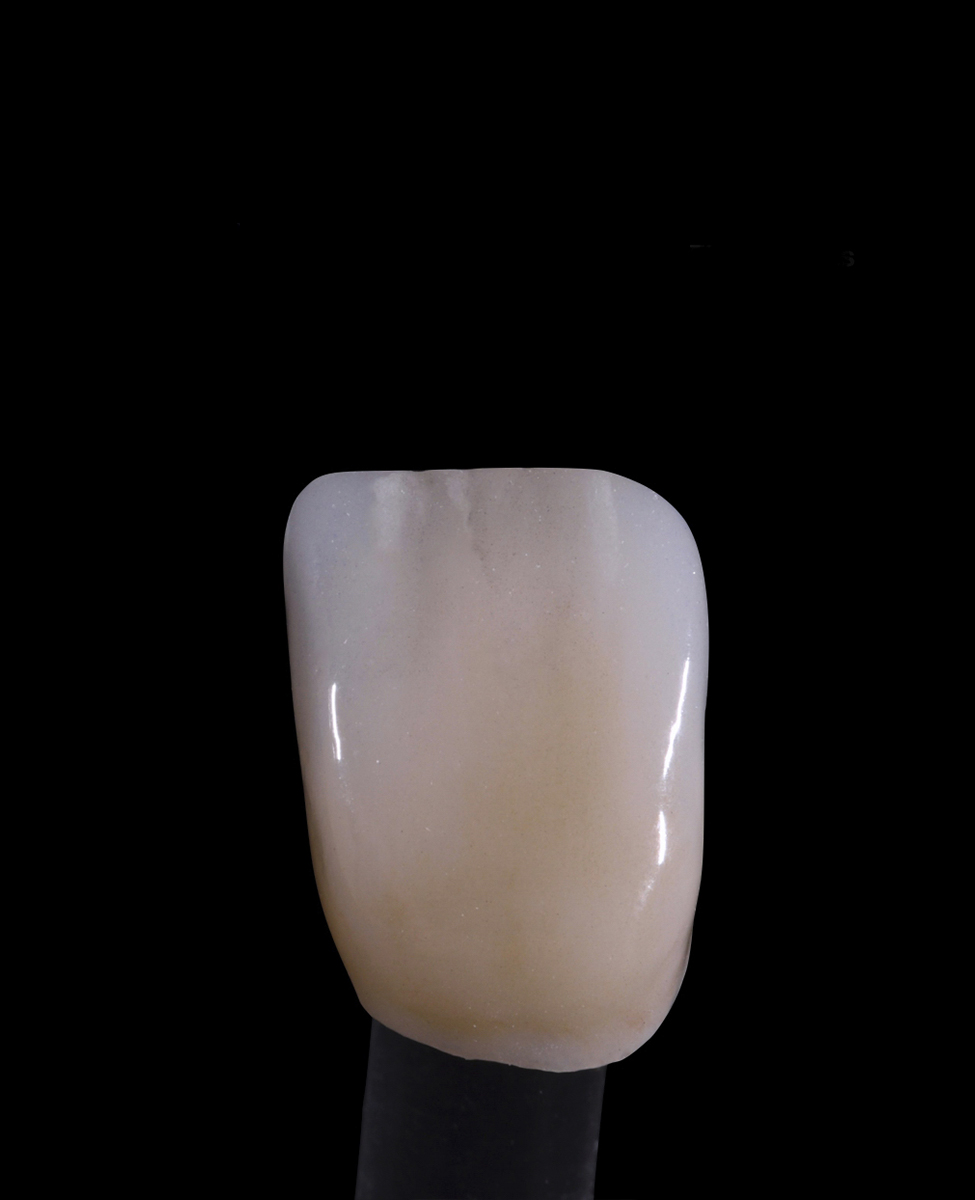
Final result
Function meets aesthetics
”I love the opalescence of Initial LiSi Block and as a consequence thereof the color stability and perfect matching.
Dr. Christian LampsonGermany
”I’m totally excited about the natural opalescence and color matching of the HT version of Initial LiSi Block.
MDT Christian HannkerGermany

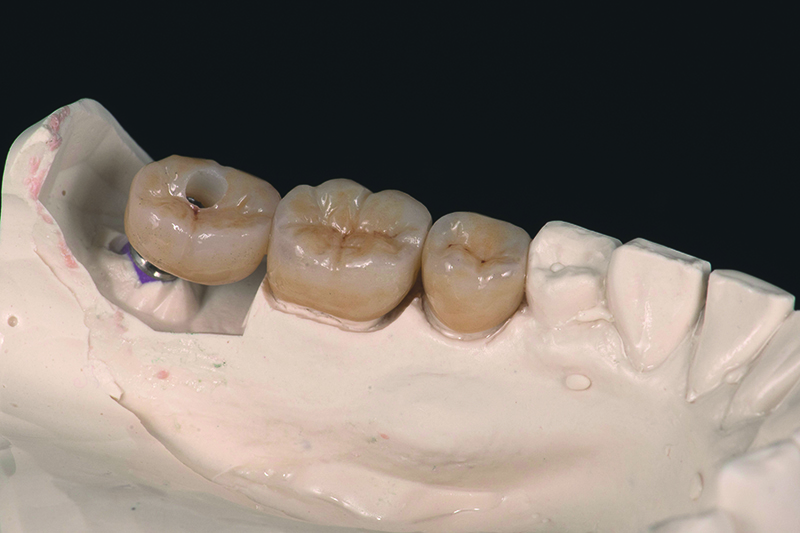

Courtesy of MDT Christian Hannker & Dr. Christian Lampson, Germany



Courtesy of MDT Marco Muttone, Dr. Alessandro Iorio, Italy
Natural opalescence
Initial LiSi Block is available in high translucency (HT) and low translucency (LT) and offers a natural opalescence in any light.
Initial LiSi Block restoration under direct and indirect light.
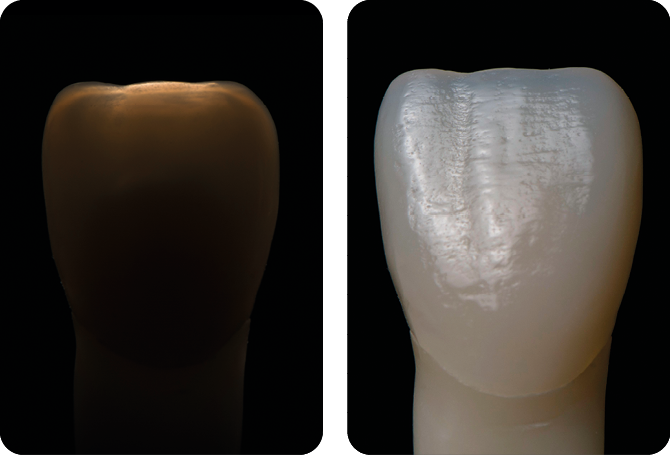
Courtesy of Dr. Javier Tapia Guadix, Spain
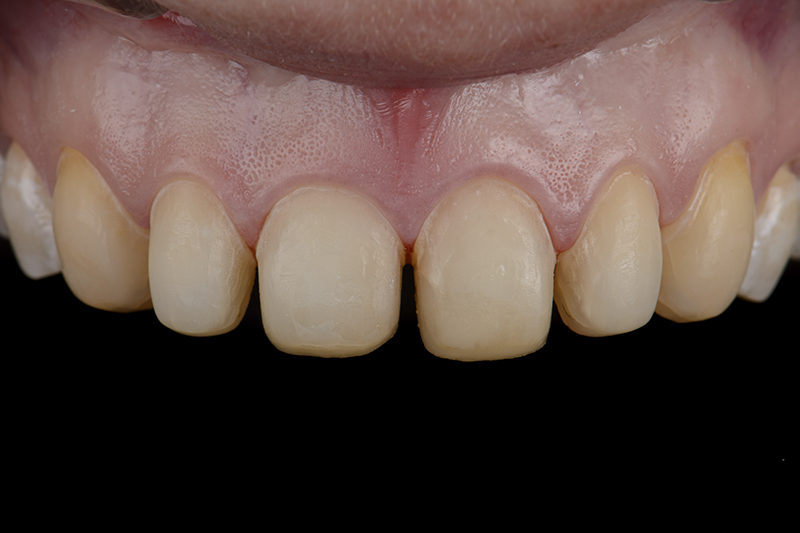
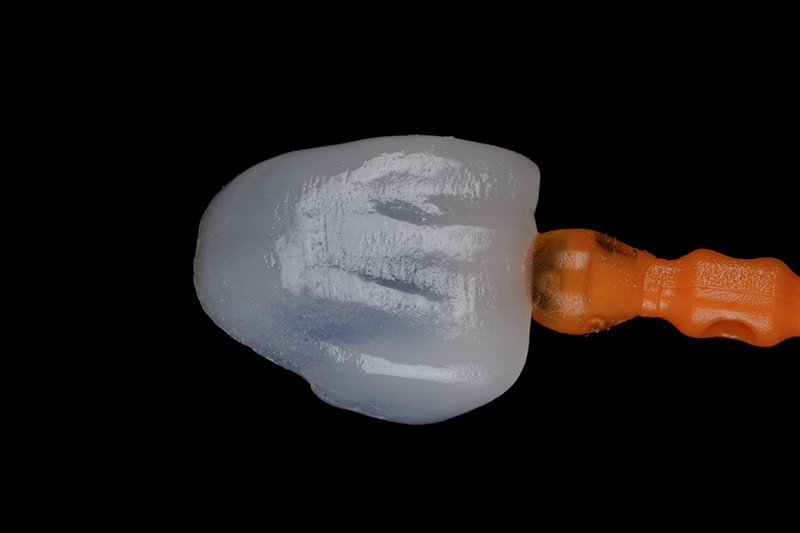
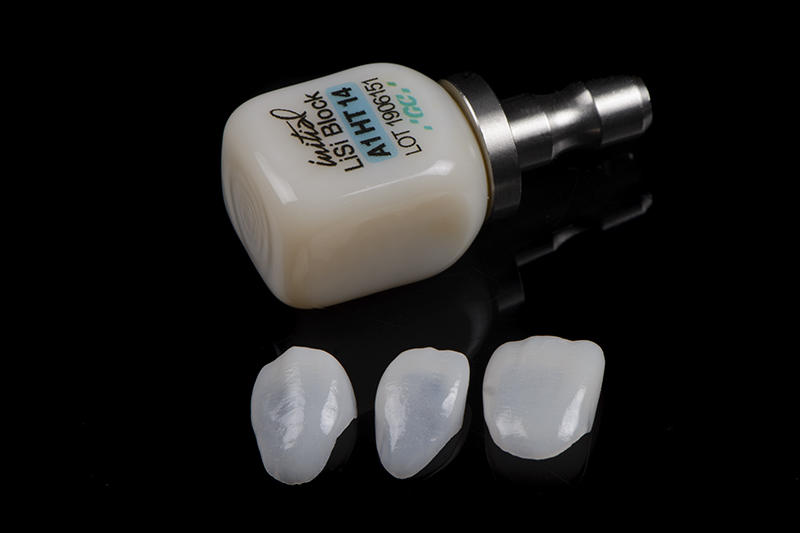
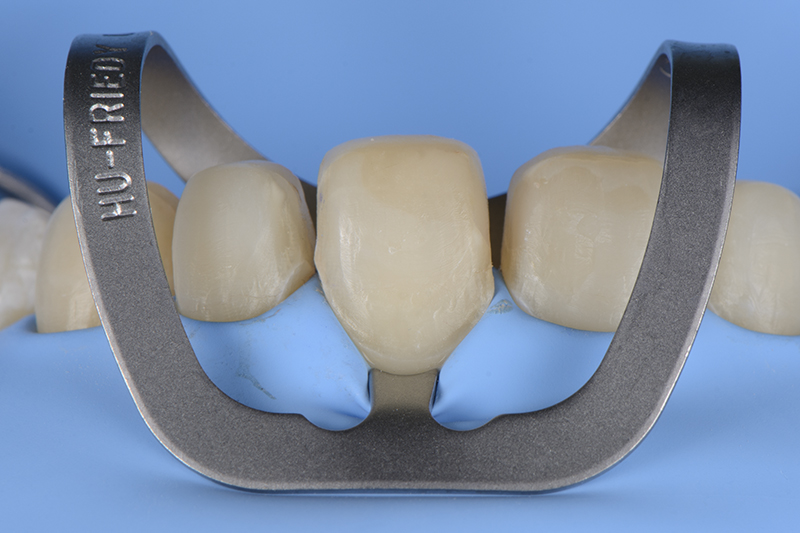
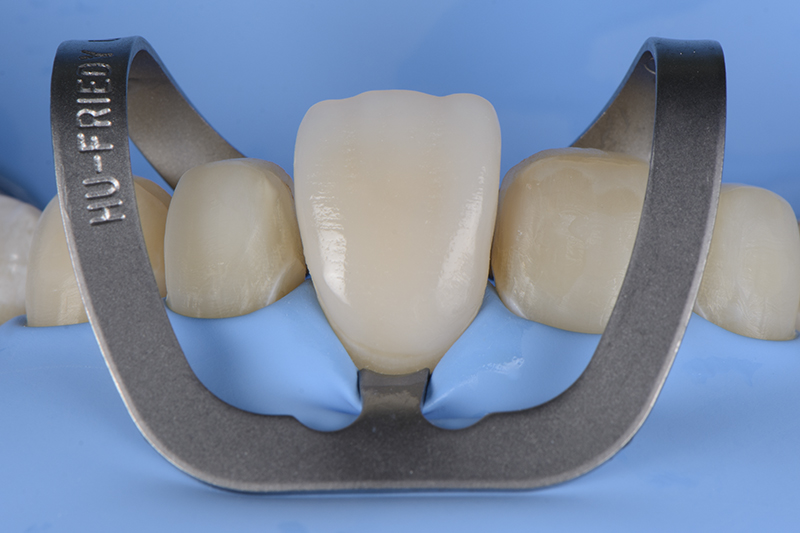
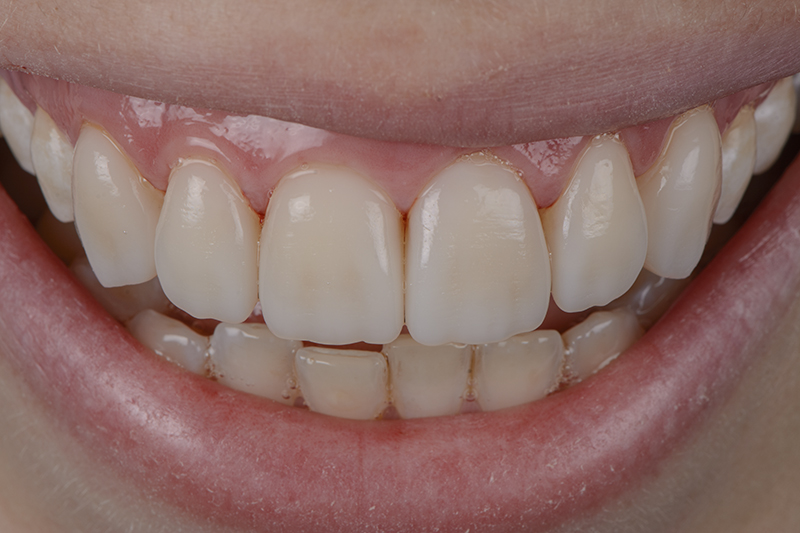
Courtesy of Dr. Javier Tapia Guadix, Spain
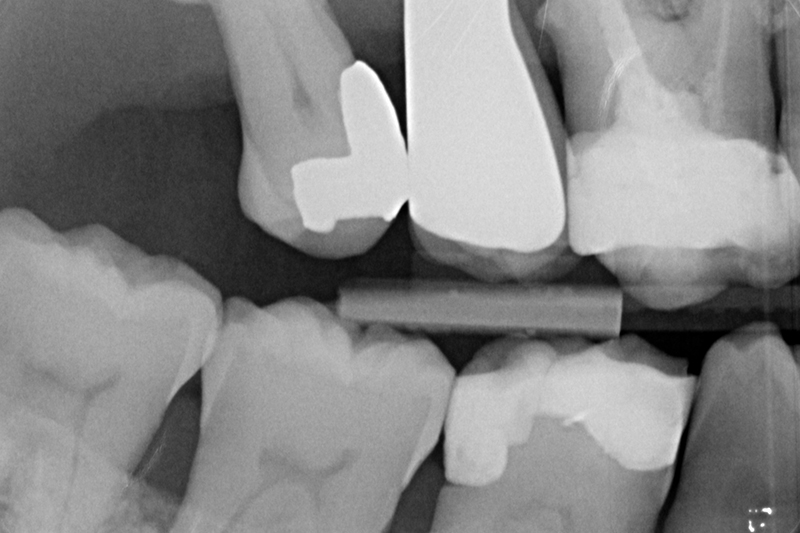

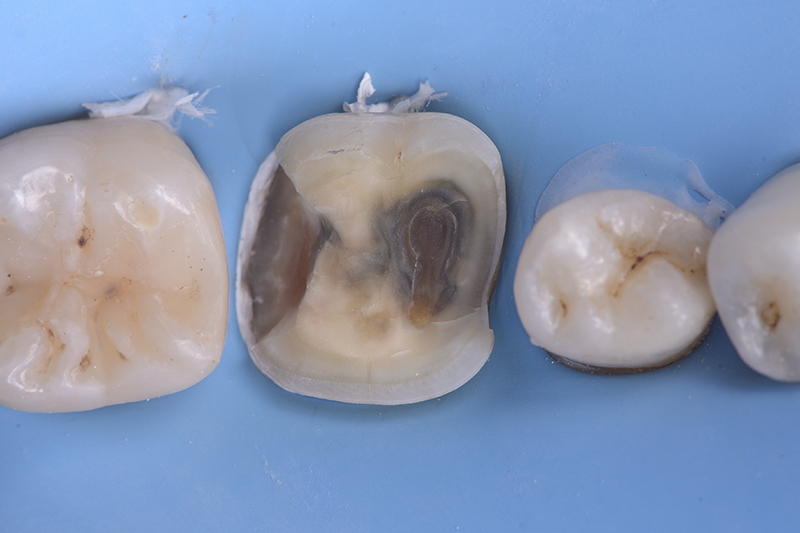
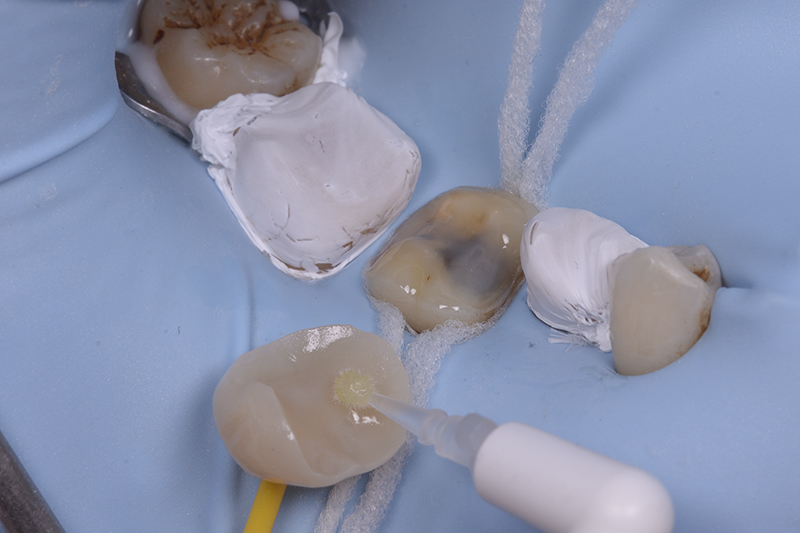
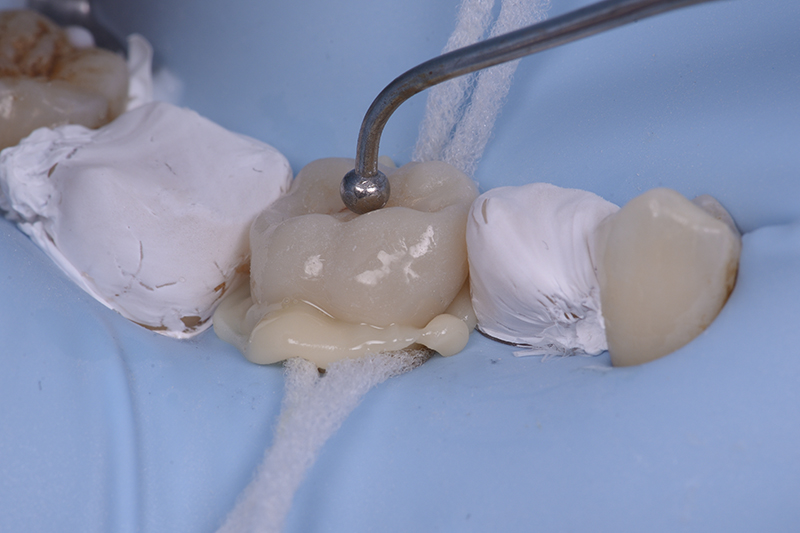
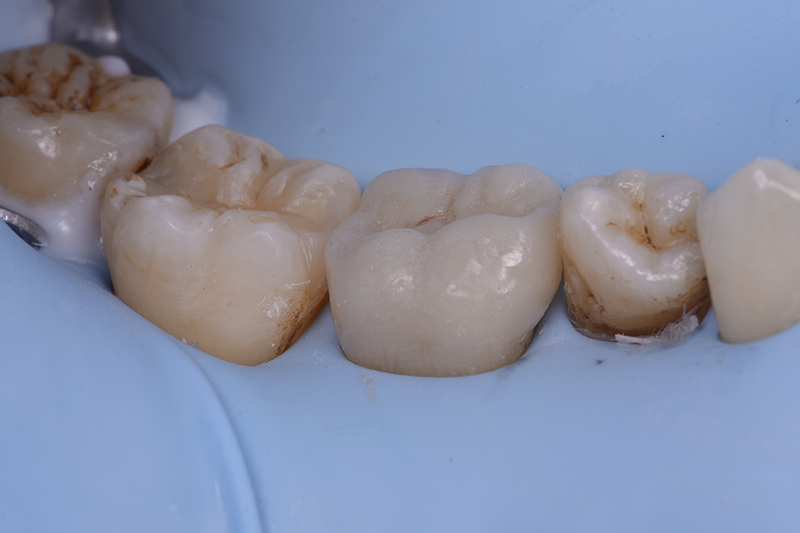
Courtesy of Dr. David Gerdolle, Switzerland
Initial LiSi Block videos
Initial LiSi Block FAQ
Does Initial LiSi Block require a firing process?
Firing is not needed since Initial LiSi Block is a fully crystallized block. Restorations can be finished in one appointment by polishing only.
How many sizes are available?
Initial LiSi Block is available only in one size (14). Size of the block is 12.7 mm x 14.7 mm x 18 mm.

What kind of milling machine should be used?
Please use a wet type milling machine. Dry milling should not be used for this material.
Can I stain Initial LiSi Block?
Yes, Initial LiSi Block can be stained and glazed by using Initial Spectrum Stains and Initial Lustre Pastes ONE.
Can I layer Initial LiSi Block with porcelain?
No, Initial LiSi Block cannot be layered with porcelain. Difference in thermal expansion between porcelain and Initial LiSi Block may cause internal microcracks. However, it is possible to micro-layer with our Initial IQ SQIN ceramic.
Can I take the shade by using the colour of the block before milling?
The final restoration shade will look different depending on the thickness of the restoration and if you paint it or not. Using the color of the pre-milled block as a shade guide is therefore not advised. A dedicated shade guide or using the Vita Classic shade guide is recommended.
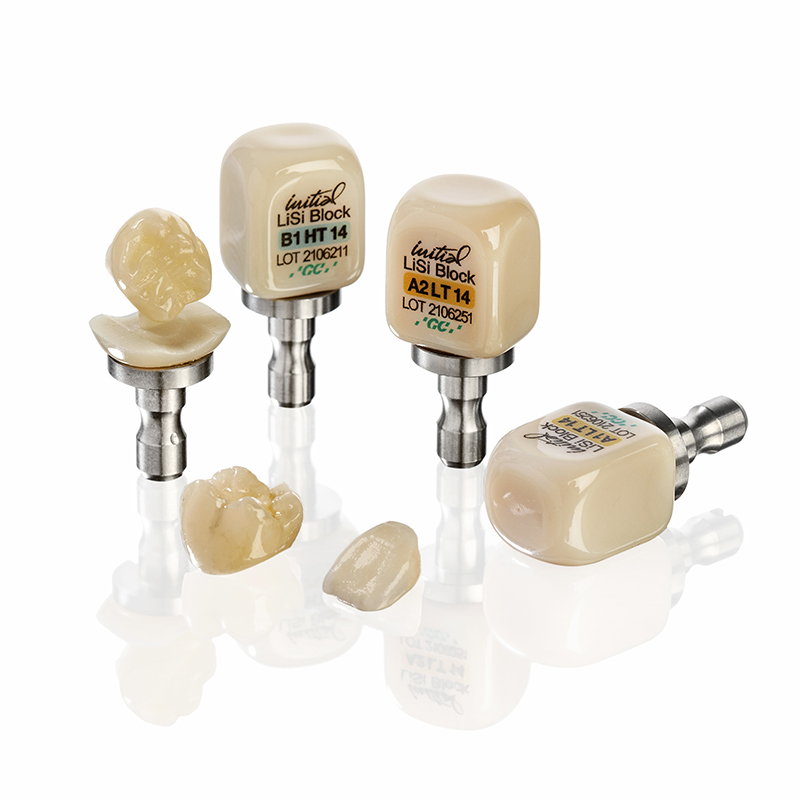
Initial Lustre Pastes ONE FAQ
How can I dilute (adapt the consistency of) the Lustre Pastes ONE?
Use the Lustre Pastes ONE Diluting Liquid to adapt the consistency. Do NOT use water to dilute. Lustre Pastes ONE may not come in contact with water.
What can I do when the consistency of the Lustre Pastes ONE is too dry?
Use the Refresh Liquid to recover the Lustre Pastes ONEin case of dryness.
How do I change the texture of the Lustre Pastes ONE?
The requested surface texture/smoothness of the Lustre Pastes ONE layer can be changed by soft vibration or condensing the applied pastes.
What should I do when sufficient gloss was not achieved after staining and glazing?
When sufficient gloss is not achieved, please adjust the firing temperature and holding time. If the firing temperature is too high, color will appear more whiteish and color adjustment by staining will be needed. When the Lustre Pastes ONE are heavily diluted or applied in a too thin layer the glossy effect is tempered, so apply a thicker layer/dilute less the pastes.
Can I apply more than one layer of Lustre Pastes ONE?
Yes, you can do further firings, keeping the same firing temperatures.
Can I mix the Lustre Pastes ONE with other Initial powders?
You can use the GC Initial Spectrum Stain powders with moderation to intensify the Lustre Pastes ONE. Mix the required amount of stain powder with the Diluting Liquid and mix it with the required Lustre Paste ONE or directly mix the stain powders with the Lustre Paste Neutral FLUO.
Are the Lustre Pastes ONE sufficiently resistant to abrasion?
Yes, the Lustre Paste ONE are a special mixture of different types of low fusing ceramic particles, stains & glaze mixture which is resistant to abrasion.

Downloads
Order information
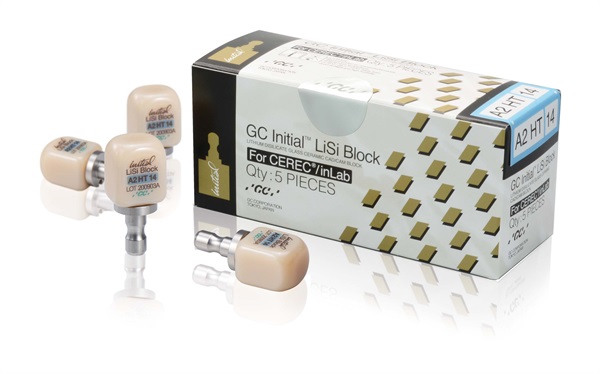
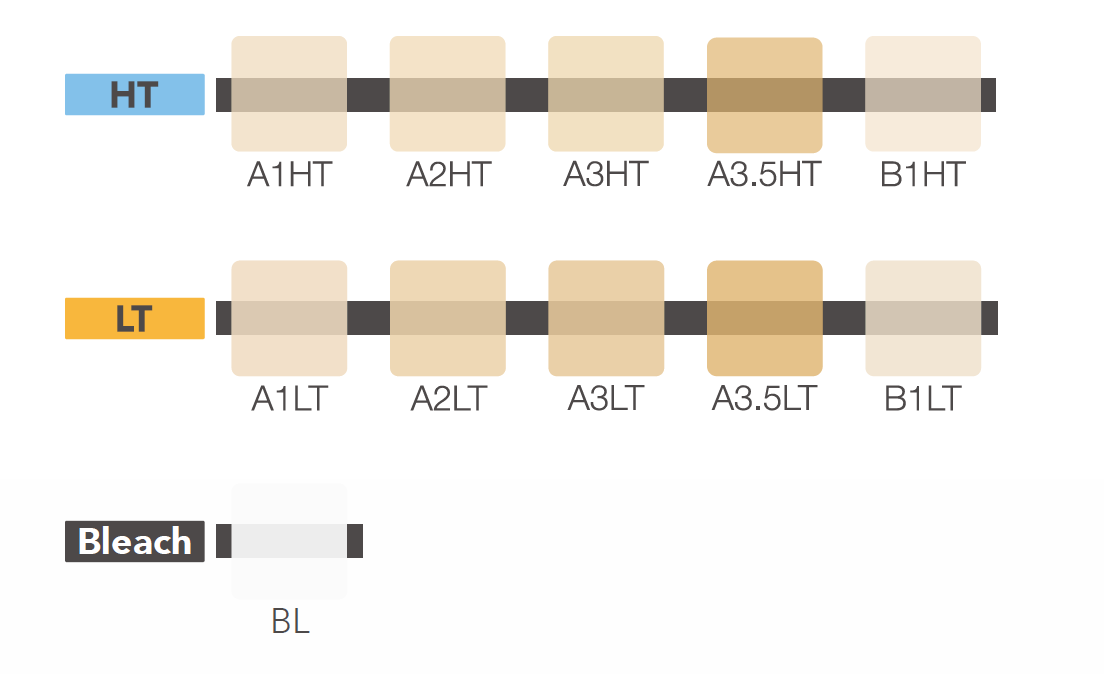
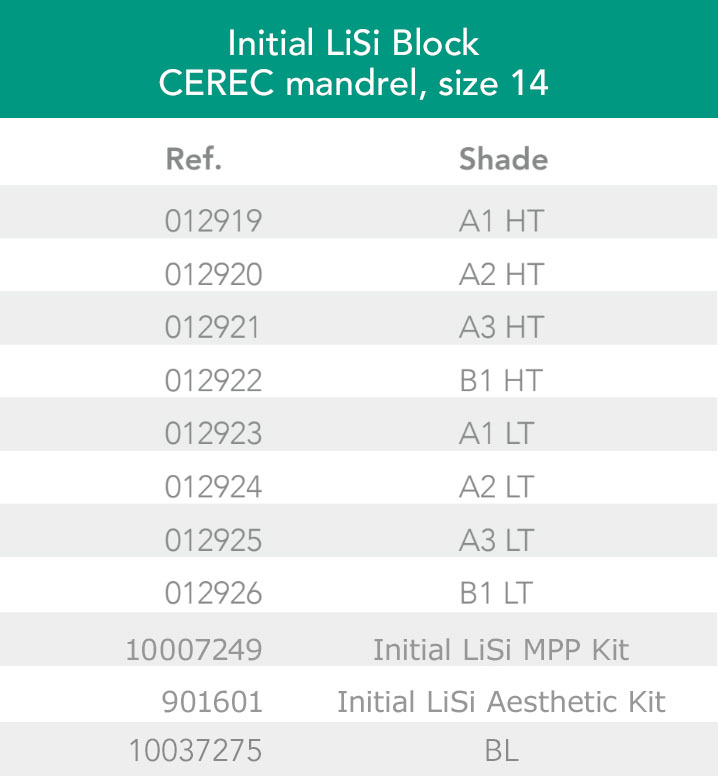
Related products
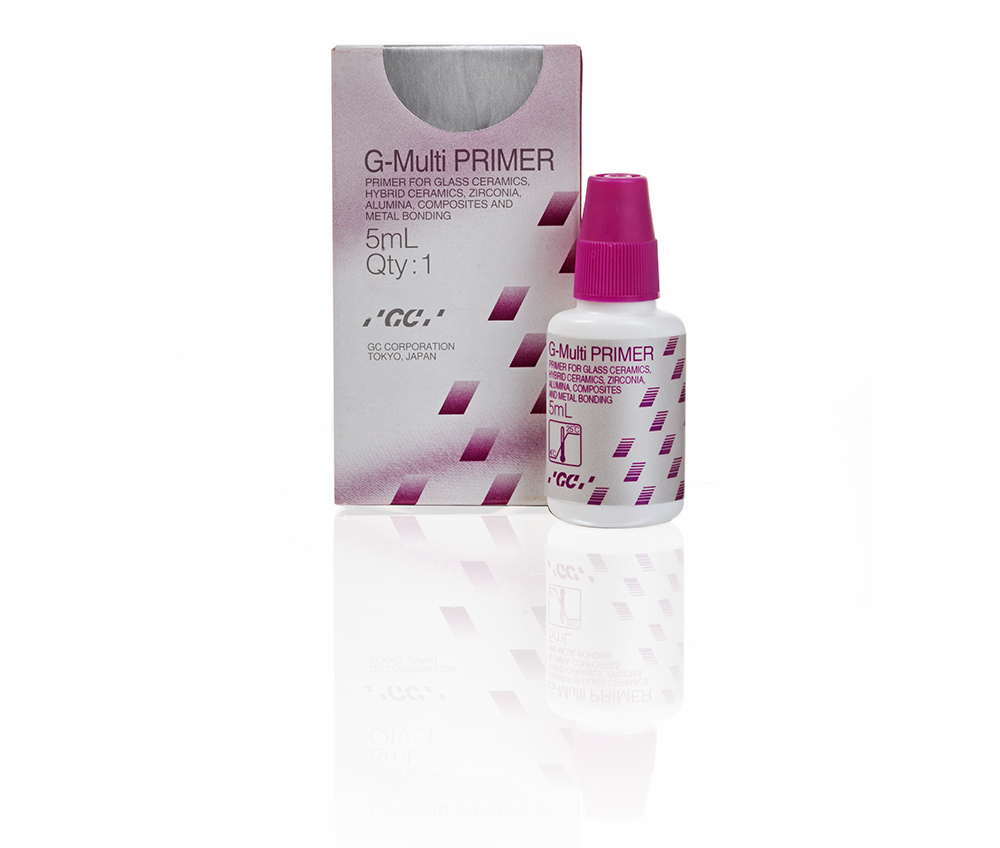
G-Multi PRIMER
Universal Primer

G-CEM ONE
Self-adhesive resin cement

Initial IQ Lustre Pastes ONE
3-dimensional paintable ceramic




